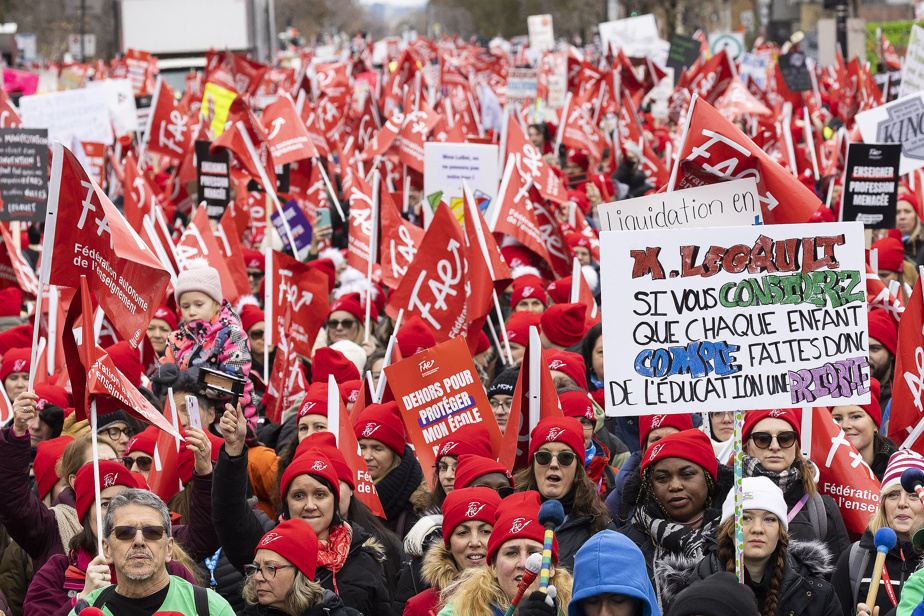Two unions rejected Thursday evening the agreement in principle concluded between the Autonomous Federation of Education (FAE) and the government of Quebec. Several teachers announced the results of the votes late in the evening on Facebook. So far, the deal has generated both support and opposition among unions.
The Lordships Education Union rejected the agreement in principle concluded with Quebec by 58%. The agreement was presented Thursday evening at a meeting to the 705 teachers of this union.
A few minutes later, the 6,400 teachers of the Education Union of the Quebec region also refused the agreement, by 60%.
There are now four unions out of nine who have spoken out against the agreement (four supported it). In the last week, the Laval region teaching union and the Basses-Laurentides teaching union also rejected the offer by 68% and 72% respectively.
The vote was heartbreaking for many teachers. At the Alliance of Professors of Montreal, the largest union affiliated with the FAE, the agreement was accepted in the middle of the night the previous week by 52%, after more than 8 hours of assembly.
The agreement was not unanimous on the side of the Syndicat de l’enseignement de l’Ouest de Montréal (SEOM), which voted in a proportion of 51% for the agreement, with only 76 votes from difference between the two camps.
Only one FAE union has not yet voted, namely the Haute-Yamaska Education Union (SEHY), which will vote on January 31. Last week, the union’s board of directors recommended to its members to reject the agreement in principle concluded with Quebec, due to the government’s “apparent contempt” for teachers.
The president of this union, Sophie Veilleux, did not want to comment on this decision “before the members have spoken”. However, in its email, the union wrote that it believes the tentative agreement “does not significantly improve [les] working conditions, including the composition of the class.
Will the agreement be accepted?
With both support and opposition among the unions, it remains unclear whether the agreement in principle will be accepted by the FAE.
It is generally understood that it must be accepted by a double majority, i.e. 50% of the votes and 50% of the affiliated unions, for it to be ratified. In fact, the procedure is more complex.
To be ratified, the agreement must obtain a majority of “union units” and a majority of “mandates” in its favor.
First, six “union units” are assigned to each of the nine unions. Each union is free to divide them as it sees fit, for example by school service centers, if the union represents more than one. These votes are therefore not automatically attributed to the choice that won at the meeting.
Then, “mandates” are assigned to each of the unions according to the number of their members. For each union, the votes are automatically allocated to the option that won at the meeting.
The population will have to be patient before knowing the outcome of the vote. Since the distribution of these units and mandates is not known to the public, it will not be possible to know if the agreement will be ratified before February 7, when the FAE will announce the result.
The FAE has nine affiliated unions which bring together 66,000 teachers. As part of negotiations leading to the renewal of their collective agreement, they held a 22-day strike at the end of last year.
With Marie-Eve Morasse, The Press
